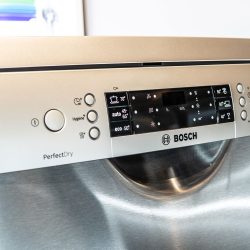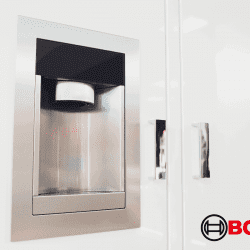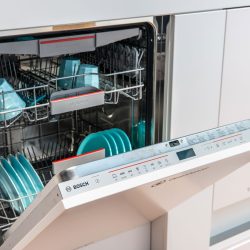Most modern refrigerators come with an ice maker and a replaceable water filter, and Bosch refrigerators are no different. The filter helps to keep the water and ice clean, and it should be changed regularly. But how often should you change the filter? And how exactly do you go about it? We have researched the answer to these inquiries. In this post, we will go over them.
Here are the steps to replace the water filter in your Bosch refrigerator:
Push-in filters:
- Locate the filter
- Press the release button
- Lift the filter out and replace it with the new one
Twist-top filters:
- Turn the filter top counterclockwise
- Remove the filter cover
- Place the new cartridge in place
If you notice that your fridge's water or ice doesn't taste as clean as it should or has debris in it, chances are that you need to replace the filter. The frequency at which you change the filter depends on a few factors, including how often you use it. Continue reading to learn more about these factors and the steps to go about changing the filter.

Steps To Replace Water Filter In Bosch Refrigerator
The process to change the filter on Bosch refrigerator is typically the same, though some older models may have a different type of refrigerator filter. We will discuss how to change both.
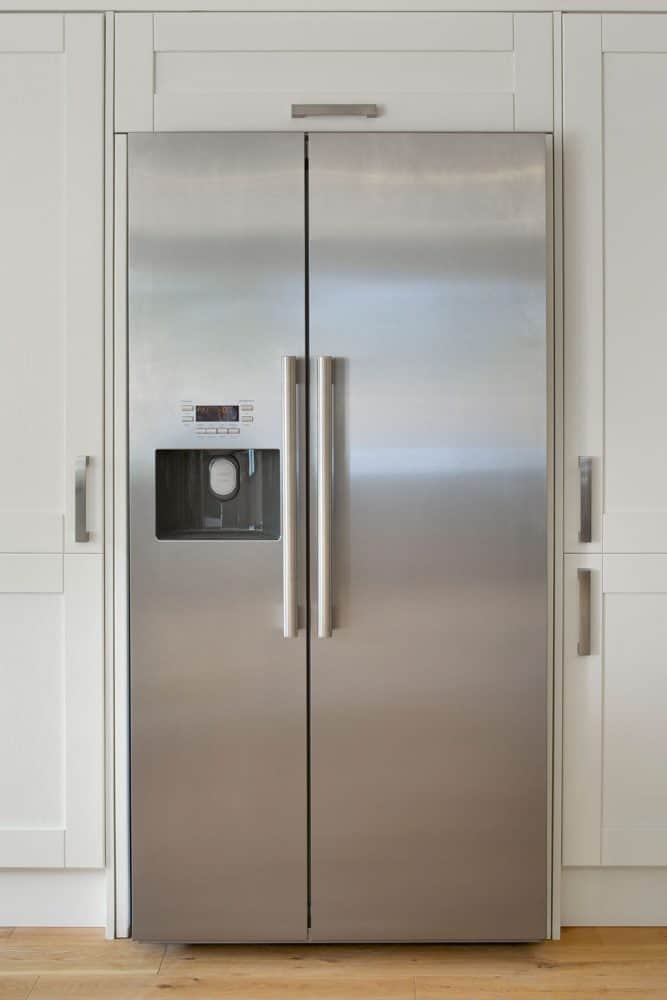
Things you'll need:
- New refrigerator filter cartridge
- Dry cloth (to wipe up spilled water)
Push-In Filters
1. Locate the filter
Some Bosch refrigerators have a push-in filter where the water filter will need to be lifted out and replaced. This filter type is usually located behind the grille in the front area of the refrigerator. Sometimes it will also be located on the inside of the refrigerator in a small compartment near the back.
2. Press the release button
To release the filter, press the "Release" button and then pull the filter out of its plastic housing. Sometimes there may not be a button. In which case, you will simply need to firmly press down on the filter to unlatch the spring. Once you feel a slight click, lift the filter out of its position.
3. Lift the filter out and replace it with the new one
Next, take the cap off of the old filter cartridge and place it on top of the new cartridge. Then, insert a new cartridge in place and be sure to press it all the way down so that the spring latch locks into position. Once the filter is locked, you should not be able to move it from side to side.
Twist-top Filters
If you have a Bosch refrigerator with a twist-top filter, the filter will typically be located in the same position, though the process to remove it is a bit different. Sometimes the filter may be located near the right corner of the refrigerator compartment inside the freezer.
1. Turn the filter top counterclockwise
To change this type of filter, simply turn the filter about 2 inches counterclockwise and then pull it out of its plastic housing. If the filter does not come out easily, you may need to jiggle it a little bit, but you typically shouldn't have to turn it any more than 180 degrees counterclockwise.
2. Remove the filter cover
After you lift the filter out, remove the old cover and place it onto the new cartridge.
3. Place the new cartridge in place
Next, place the new filter into position and turn it to the right to lock it into place.
Rinsing the New Filter
Most refrigerator filters contain carbon granules that help to clean the water before it's utilized by the refrigerator. For this reason, it's typically recommended to flush out the cartridge with water before using it.
Doing so helps to remove any granules from the filter so that they do not make their way into your water or ice. Flush the filter by running water over it or setting it in a pitcher for 5 to 7 minutes. If you notice any black or gray spots in the water afterward, flush the filter again until the water is completely clear.
Want a visual of how to change a Bosch refrigerator water filter? Check out this video:
How do you reset the water filter on a Bosch refrigerator?
Resetting the water filter on a Bosch refrigerator is pretty easy. Simply hold down at the "Light-Filter" button for about 3 to 4 seconds. After releasing it, you should see the light flash, indicating that the filter has been reset.
Do you have to turn off the water to change the filter on a refrigerator?
No, you don't need to turn off the water supply when changing the filter. However, you shouldn't try to use the ice machine or water dispenser while the filter is not in place.
How often should you change the water filter in a Bosch refrigerator?
It's typically recommended that you replace your water filter about every five to six months. However, for most Bosch refrigerators, the recommendation is every three to six months depending on how often you use the filter.
The number of people in your home can also affect this, so it's important to take this into consideration.
For example, if you have anywhere from four to six people in your home, you may use more water than someone who only lives with one or two other people. The best thing to do is to go by the indicator as to when to change the filter.
What happens if you don't change the refrigerator filter?
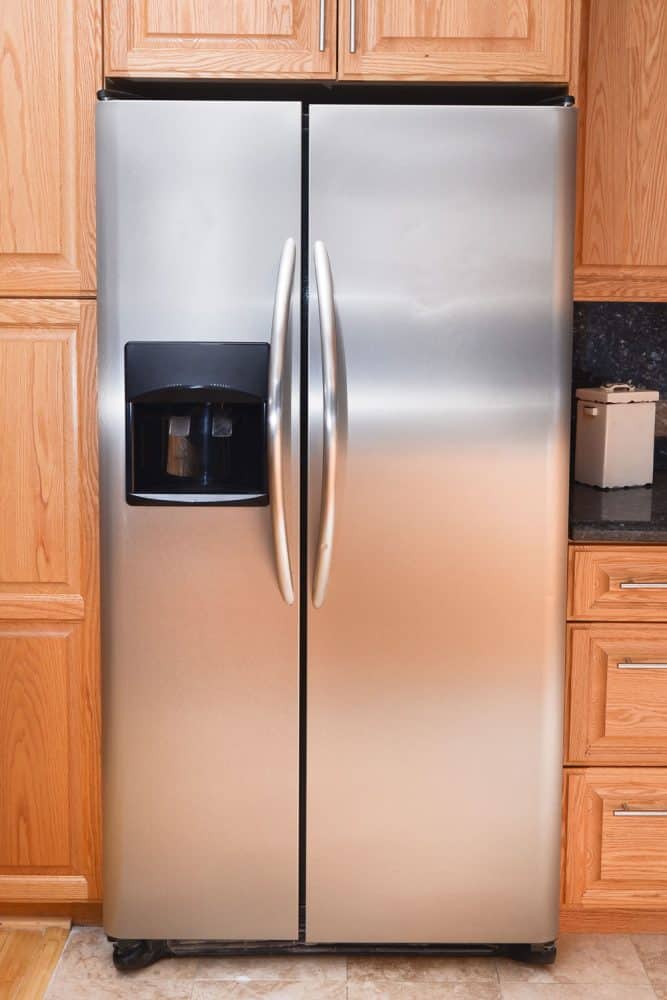
If you don't change your filter regularly, the consequences could be minor to reasonably severe. It mainly has to do with the potential chemicals you may consume by drinking water that has not been filtered.
Note that the contaminants in water can vary by your geographical location, as some areas may have safer drinking water than others. Let's look at some of the harmful effects that can come with not changing a filter regularly.
Potential lead poisoning
There is a reason why lead paint was removed from the marketplace and why homeowners have to sign a declaration stating that their home contains no lead paint. Lead consumption is simply unhealthy and very dangerous.
Dangerous levels of lead can seep into old water pipes, which has been known to cause several behavioral, neurological, and other health problems in adults and children. A filter can significantly reduce the lead contained in the tap water.
Asbestos contamination
Often, when we hear the word asbestos, we think of home building materials and products. However, asbestos can easily be found in atmospheric pollution, industrial waste, and eroded water pipes, meaning it can make your water unsafe to drink.
This is why several health organizations in governing bodies have deemed it illegal and have issued a warning against its use. Asbestos is known to cause serious health issues including mesothelioma, lung cancer, and various respiratory issues.
High mercury levels
There have also been reports of high mercury levels in tap water in some areas, though this has drastically decreased over the years.
High levels have been known to cause kidney, brain, and functional issues in adults and developing fetuses. In any event, a filter can help to eliminate mercury in tap water almost entirely.
Pathogens
There are millions of other pathogens that can be found in unfiltered tap water. These pathogens can expose you to unknown viruses, parasites, and bacteria that can be detrimental to your health.
In fact, according to the Centers for Disease Control and Prevention, many water-borne diseases and outbreaks can be prevented by simply filtering your water.
Bacteria from chemical byproducts, pharmaceutical waste, and even radioactive contaminants can find themselves in everyday drinking water that's not filtered. Not only can these contaminants affect your health, but they can also cause the scaling in the ice and water and on your refrigerator.
As a result, it can cause your refrigerator to develop stains, spots, and rust, which can significantly damage its appearance. It can also cause clogs in the waterline.
Wrapping Things Up
The best way to ensure that you have great tasting and safe drinking water is to make sure that you're changing your Bosch water filter at least every three to six months.
This means paying attention to the filter change indicator on the refrigerator or simply keeping track of the last change by writing the change date on the new filter. We hope this post has helped you gain some insight on how to change your Bosch water filter when it's time.
Before you go, be sure to check out our other posts:
How To Unclog A Garbage Disposal With Standing Water
Bosch Dishwasher Cycles Explained—Primary And Secondary Add-Ons

